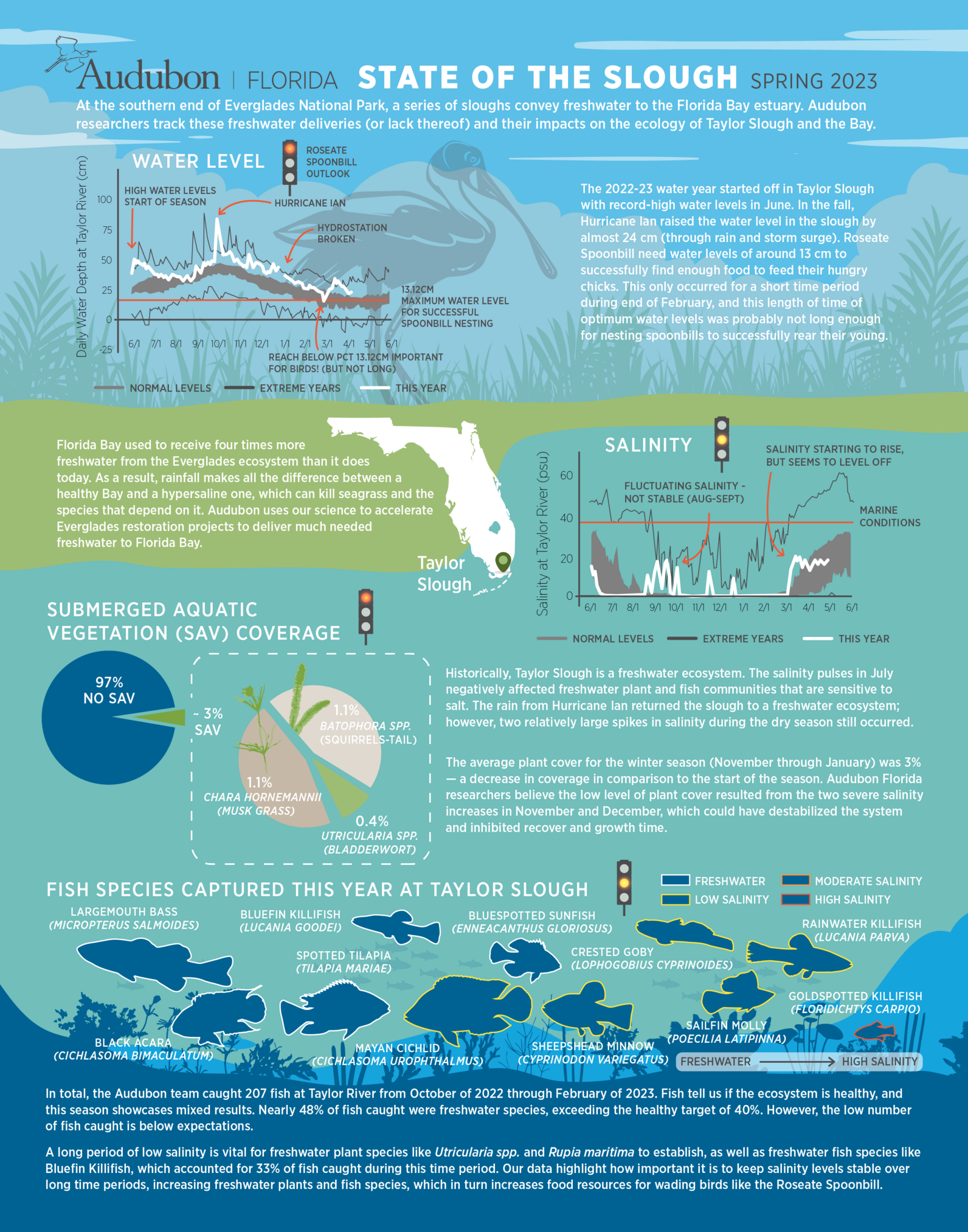Click here to download a PDF of the infographic.
At the southern end of Everglades National Park, a series of sloughs convey freshwater to the Florida Bay estuary. Audubon researchers track these freshwater deliveries (or lack thereof) and their impacts on the ecology of Taylor Slough and the Bay.
Florida Bay used to receive four times more freshwater from the Everglades ecosystem than it does today. As a result, rainfall makes all the difference between a healthy Bay and a hypersaline one, which can kill seagrass and the species that depend on it. Audubon uses our science to accelerate Everglades restoration projects to deliver much needed freshwater to Florida Bay.

Water
The 2022-23 water year started off in Taylor Slough with record-high water levels in June. In the fall, Hurricane Ian raised the water level in the slough by almost 24 cm (through rain and storm surge). Roseate Spoonbill need water levels of around 13 cm to successfully find enough food to feed their hungry chicks. This only occurred for a short time period during end of February, and this length of time of optimum water levels was probably not long enough for nesting spoonbills to successfully rear their young.
Plants
The average submerged aquatic vegetation cover for the winter season (November through January) was 3% — a decrease in coverage in comparison to the start of the season. Audubon Florida researchers believe the low level of plant cover resulted from the two severe salinity increases in November and December, which could have destabilized the system and inhibited recovery and growth time.
Fish
In total, the Audubon team caught 207 fish at Taylor River from October of 2022 through February of 2023. Fish tell us if the ecosystem is healthy, and this season showcases mixed results. Nearly 48% of fish caught were freshwater species, exceeding the healthy target of 40%. However, the low number of fish caught is below expectations. A long period of low salinity is vital for freshwater plant species like Utricularia spp. and Rupia maritima to establish, as well as freshwater fish species like Bluefin Killifish, which accounted for 33% of fish caught during this time period.
Our data highlight how important it is to keep salinity levels stable over long time periods, increasing freshwater plants and fish species, which in turn increases food resources for wading birds like the Roseate Spoonbill.




